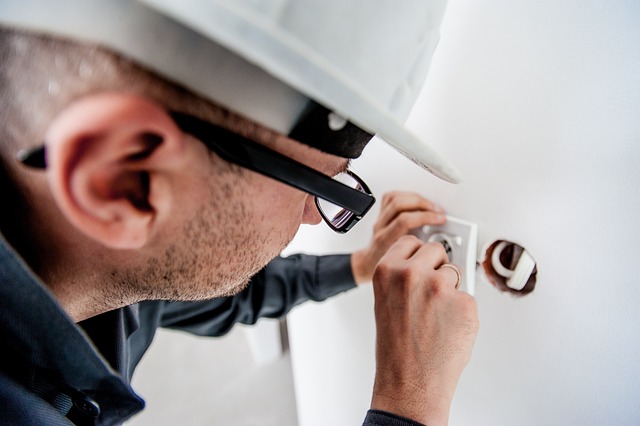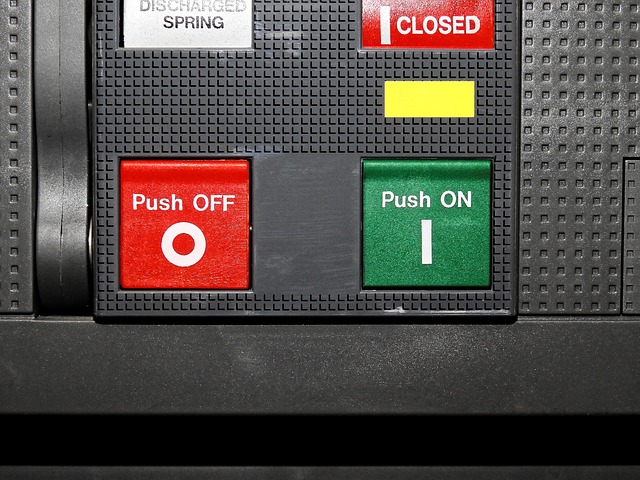Homeowners should address electrical issues like faulty switches promptly for safety. Engaging an electrician for repairs or replacements is cost-effective, ensuring a functional system. Basic tools and safety gear are essential for DIYers, while professionals adhere to standards with guarantees. For complex cases, hire licensed electricians for safe, reliable solutions.
In any home, switches, receptacles, and outlets are critical components of your electrical system. Over time, these parts can wear out or become damaged, leading to issues like flickering lights, dead power outlets, or faulty switches. This article guides you through understanding common problems, navigating when to repair or replace, and ensuring safety with essential tools and steps for a do-it-yourself project. Learn when to call an electrician for professional assistance, and discover the benefits of expert intervention for your home’s electrical needs.
- Understanding Common Issues with Switches, Receptacles, and Outlets
- When to Repair vs Replace: A Cost-Effective Approach
- Essential Tools and Safety Precautions for the Job
- Step-by-Step Guide: Replacing a Burned-Out Switch
- Hiring an Electrician: Benefits and Best Practices
Understanding Common Issues with Switches, Receptacles, and Outlets

Many homeowners often encounter issues with switches, receptacles, and outlets, which can disrupt daily life and safety. Common problems include faulty wiring, loose connections, and outdated components. Over time, these parts may wear out or become damaged due to regular use, especially in high-traffic areas. For instance, a switch that frequently flips itself or a outlet that emits a faint buzzing sound could indicate a serious electrical problem. An experienced electrician can quickly diagnose these issues, whether it’s a simple repair like replacing a worn-out receptacle or a more complex task such as rewireing a circuit to accommodate new construction.
Regular inspections by professionals are essential in preventing major hazards. An electrician can identify potential risks and offer solutions tailored to your home’s unique needs. By addressing these common issues promptly, homeowners can ensure the safety of their families and reduce the risk of electrical fires or shocks.
When to Repair vs Replace: A Cost-Effective Approach

When deciding whether to repair or replace electrical components like switches, receptacles, and outlets, homeowners often face a cost-effective dilemma. Engaging an electrician for repairs is generally more affordable than replacing the entire unit, especially for older fixtures that might still function well with some tweaking. However, repairs may not always be feasible or sustainable in the long term. For instance, if a switch has repeatedly burned out due to a faulty wiring issue, replacing it might be the better option as it prevents future malfunctions and potential safety hazards.
A cost-effective approach is to assess the age and condition of the electrical components. Outlets and switches that are close to their end of life or have shown signs of damage may require replacement. In contrast, minor issues like loose connections or cosmetic damages can often be repaired by a qualified electrician, extending the lifespan of these components and saving on unnecessary replacements. This strategic balance between repair and replacement not only preserves financial resources but also ensures a safe and efficient electrical system in your home.
Essential Tools and Safety Precautions for the Job

When tackling repairs or replacements of switches, receptacles, and outlets, both electricians and DIY enthusiasts need a keen understanding of essential tools and safety precautions. First on the list is a reliable voltage tester to ensure safe work environments by confirming power interruption. A pair of high-quality wire strippers is indispensable for neatly preparing wires, while long-nose pliers help in tightening or loosening connections securely. For precise cutting and bending tasks, needlenose pliers are a must-have, ensuring clean and controlled manipulations.
Safety goggles and insulated gloves are non-negotiable to protect against electrical hazards and sharp objects. Always prioritize grounding your work area to divert any stray voltage, and use a multimeter for accurate voltage readings. Remember, proper ventilation is crucial in confined spaces, and keeping a fire extinguisher nearby is a prudent step. These tools and precautions empower you to undertake these tasks with confidence, ensuring the job is done right and safely, as expected from a professional electrician.
Step-by-Step Guide: Replacing a Burned-Out Switch

Step-by-Step Guide: Replacing a Burned-Out Switch
The first step in replacing a burned-out switch is to turn off the power at the main electrical panel. This ensures your safety and prevents any accidents during the repair process. Once powered down, locate the faulty switch, usually identified by its scorched or damaged appearance. Next, use a screwdriver to unscrew the switch from the panel, taking note of its orientation for proper installation later. Remove the old switch and inspect the outlet box to ensure no damage has occurred.
Next, prepare the new switch by ensuring it matches the specifications of the old one. Insert the new switch into the outlet box, aligning it correctly. Secure it in place with screws and double-check that all connections are tight. Before turning the power back on, test the switch to ensure its functionality. If everything checks out, your electrician can now proceed with replacing similar components like receptacles and outlets as needed.
Hiring an Electrician: Benefits and Best Practices

Hiring a professional electrician is often the best course of action when dealing with complex electrical issues, especially for repairs or replacements involving switches, receptacles, and outlets. Electricians possess the specialized knowledge and skills required to ensure work is safe, efficient, and up to code. They have access to the right tools and equipment, which can save time and effort, and their expertise minimizes risks associated with handling electricity.
When hiring an electrician, it’s crucial to choose a licensed and insured professional. This ensures that they adhere to industry standards and regulations, protecting you from potential hazards. Reputable electricians offer guarantees on their work, providing peace of mind. Effective communication is key; discussing the issue clearly and expecting a detailed explanation of the solution demonstrates professionalism. Asking for references or checking online reviews can also help ensure you’re hiring a reliable electrician.
When dealing with faulty switches, receptacles, or outlets, it’s crucial to know when to take on the repair yourself or hire a professional electrician. By understanding common issues and employing essential safety precautions, you can make informed decisions. Whether choosing cost-effective repairs or replacements, having this knowledge ensures your home’s electrical system functions safely and efficiently. Remember, an experienced electrician is always a valuable asset for complex jobs, ensuring your peace of mind and the longevity of your home’s wiring.
